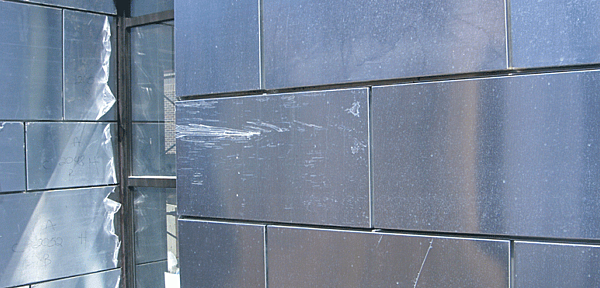Facts About Zinc

- Zinc has a self-healing mechanism in it. The zinc coating sacrifices itself slowly by galvanic action to protect the base steel. This sacrificial action continues as long as any zinc remains in the immediate area.
- Zinc melts at 787 F (420 C), and boils at 1,665 F (907 C).
- Zinc comprises an estimated 0.004% of the Earths crust.
- Zinc ranks 24th in order of material abundance in the Earth.
- Zinc is essential for the growth and development of almost all life: between 1.4 and 2.3 grams of zinc are to be found in the average, healthy adult.
- Zinc is found everywhere in daily life: in every cell of the human body, in the earth, in the food we eat and in products we use (sunblock, automobiles, cosmetics, airplanes, appliances, surgical tools, zinc lozenges).
- Children need zinc for growth. Adults need zinc for reproduction and good health.
- The U.S. Recommended Daily Allowance (RDA) is 15 milligrams of zinc.
- Recently, zinc is found to enhance eyesight, preventing the onset of macular degeneration.
- Zinc occurs naturally in the earth, air and foods you eat; it is the second most common trace metal, after iron, naturally found in the body.
- Zinc is essential to your health, boosting the immune system, helping cells to grow, regulating appetite and healing wounds; zinc lozenges can even cut short the common cold.
- Zinc is a natural insect repellent and sun screen, protecting lips and skin.
- Zinc is the third most used nonferrous metal (after aluminum and copper), of which the U.S. consumes more than one million metric tons annually; the average person will use 730 pounds of zinc in his or her lifetime, according to the U.S. Bureau of Mines.
- Zinc is 100% recyclable. Over 80% of the zinc available for recycling is currently recycled.
- More than one-third of the zinc consumed in North America is produced from recycled materials.
- Zinc is primarily used as a coating on iron and steel to protect against corrosion. Corrosion costs the US 3.2% of the GDP annually, or about $423 billion.
- Zinc makes the average automobile last longer—17 pounds of zinc protect it from rust, 20 pounds are used to make zinc die-cast parts like door handles and locks, and each tire contains about 1/2 pound of zinc, needed to cure rubber.
- Due to the long lifespan of most zinc-coated products like galvanized steel, which in some cases may last maintenance-free for over 100 years, much of the zinc produced in the past is still in use, constituting a valuable and sustainable resource of zinc for generations.
- Zinc can store six times more energy per pound than other battery systems, increasing the range of electric vehicles; zinc-air batteries have powered cars to speeds of 120 mph.
- Zinc combined with copper makes brass
- The U.S. penny is 98 percent zinc, with a copper coating.
Zinc is Essential for Life
As one of natures essential elements, zinc is required by humans throughout their life-cycles to grow and develop. Zinc occurs naturally throughout the earth in plants and animals and the food we eat. Every cell requires zinc to multiply.
Zinc is required for smell and taste and helps regulate the bodys immune system. It heals and protects the skin and boosts brain activity. Zinc is essential for life.
Zinc and Steel
Zincs most remarkable quality is its natural capacity to protect. By protecting steel against corrosion, zinc protects buildings, automobiles, ships and steel structures of every kind from corrosion by the atmosphere, water, and soil. By protecting against corrosion and its costly effects, zinc extends the life of steel, thus protecting investments. A typical galvanized coating can now be expected to last 70 to 150 years without maintenance in most urban and rural atmospheres.
